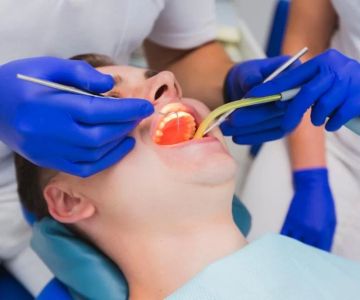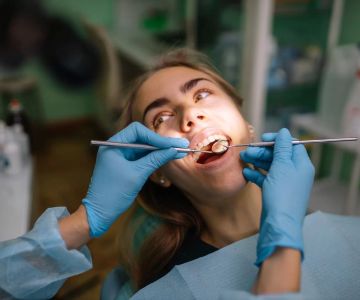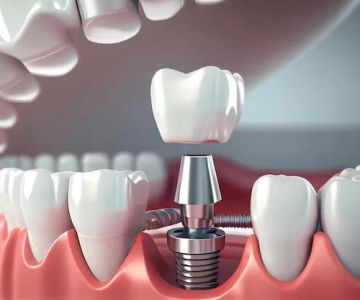Braces for Underbite: Effective Treatment and Options for Correction
- Causes of Underbite
- Braces Options for Underbite
- Steps for Underbite Treatment
- Real-life Underbite Correction Stories
- Cost of Braces for Underbite
1. Causes of Underbite
An underbite occurs when the lower teeth and jaw protrude beyond the upper teeth. It can be caused by a variety of factors, including genetics, abnormal tooth development, or jaw misalignment. Children may develop underbites due to thumb-sucking, while adults can experience them as a result of jaw growth discrepancies.
2. Braces Options for Underbite
When it comes to correcting an underbite, several braces options are available. Traditional metal braces are the most common and effective for realigning teeth and jaws. For less severe cases, clear aligners like Invisalign might be recommended, though they may not be as effective in correcting a significant underbite. Other options include lingual braces, which are placed behind the teeth, and ceramic braces that blend with the natural color of your teeth.
2.1 Traditional Metal Braces
Metal braces are often the first choice for treating an underbite. They consist of metal brackets and wires that gradually shift the teeth into their proper positions. While they may be visible, they are highly effective in correcting severe misalignments.
2.2 Clear Aligners
Clear aligners, such as Invisalign, offer a more discreet treatment option. These custom-made plastic trays fit over your teeth and gradually move them into the correct position. However, they are typically recommended for mild to moderate cases and may not be suitable for severe underbites.
2.3 Lingual and Ceramic Braces
Lingual braces are placed on the back of the teeth, making them virtually invisible from the front. Ceramic braces offer a similar aesthetic advantage but are placed on the front of the teeth, using tooth-colored materials to blend in. Both options can be effective but may come with added costs and maintenance requirements.
3. Steps for Underbite Treatment
Underbite treatment typically involves a comprehensive orthodontic plan that begins with a thorough consultation. Your orthodontist will assess the severity of the underbite, take x-rays, and develop a personalized treatment plan. The steps generally include:
- Initial consultation and diagnosis
- Customizing the braces or aligner treatment plan
- Regular appointments for adjustments
- Post-treatment care, including retainers
4. Real-life Underbite Correction Stories
Many individuals who have undergone underbite correction share their experiences to inspire others. For instance, Sarah, a 34-year-old marketing manager, had struggled with an underbite for years before opting for traditional braces. After 18 months of treatment, she now enjoys a healthier smile and improved jaw function. Real-life stories like Sarah's can be reassuring and motivating for those considering treatment.
5. Cost of Braces for Underbite
The cost of braces for an underbite varies depending on the type of braces used, the severity of the underbite, and the length of treatment. Traditional metal braces typically range from $3,000 to $7,000, while clear aligners may cost between $4,000 and $8,000. Lingual and ceramic braces can be more expensive, often exceeding $8,000. It's important to consult with your orthodontist to get a precise estimate based on your needs. Many insurance plans cover orthodontic treatment, so be sure to check with your provider.
For more information on how to correct your underbite and explore affordable treatment options, visit Dentistry Toothtruth.







 Angela Manning DDS PC4.0 (66 review)
Angela Manning DDS PC4.0 (66 review) Eastern Dental3.0 (336 review)
Eastern Dental3.0 (336 review) Crimsoncare Family Dental5.0 (248 review)
Crimsoncare Family Dental5.0 (248 review) ABC Dentistry & Orthodontics4.0 (1564 review)
ABC Dentistry & Orthodontics4.0 (1564 review) Loma Linda University Center for Dentistry and Orthodontics4.0 (24 review)
Loma Linda University Center for Dentistry and Orthodontics4.0 (24 review) Mountainside Dental Group - Rancho Santa Margarita4.0 (117 review)
Mountainside Dental Group - Rancho Santa Margarita4.0 (117 review) The Importance of Oral Health Education During Pregnancy for a Healthy Pregnancy
The Importance of Oral Health Education During Pregnancy for a Healthy Pregnancy Best Tips for Brushing Your Teeth Properly for Healthy Gums: Essential Techniques for Oral Health
Best Tips for Brushing Your Teeth Properly for Healthy Gums: Essential Techniques for Oral Health Why Skipping Dental Checkups Can Lead to Bigger Oral Health Problems
Why Skipping Dental Checkups Can Lead to Bigger Oral Health Problems Advantages of Porcelain Dental Restorations
Advantages of Porcelain Dental Restorations How Can Diabetes Cause Tooth and Gum Problems? Preventing and Managing Oral Health Issues
How Can Diabetes Cause Tooth and Gum Problems? Preventing and Managing Oral Health Issues Healthy Habits for Promoting Good Oral Health and Hygiene: Tips for a Healthy Smile
Healthy Habits for Promoting Good Oral Health and Hygiene: Tips for a Healthy Smile